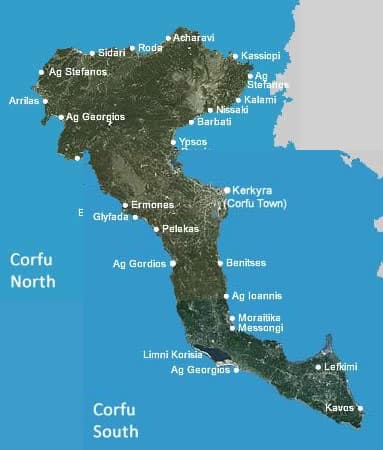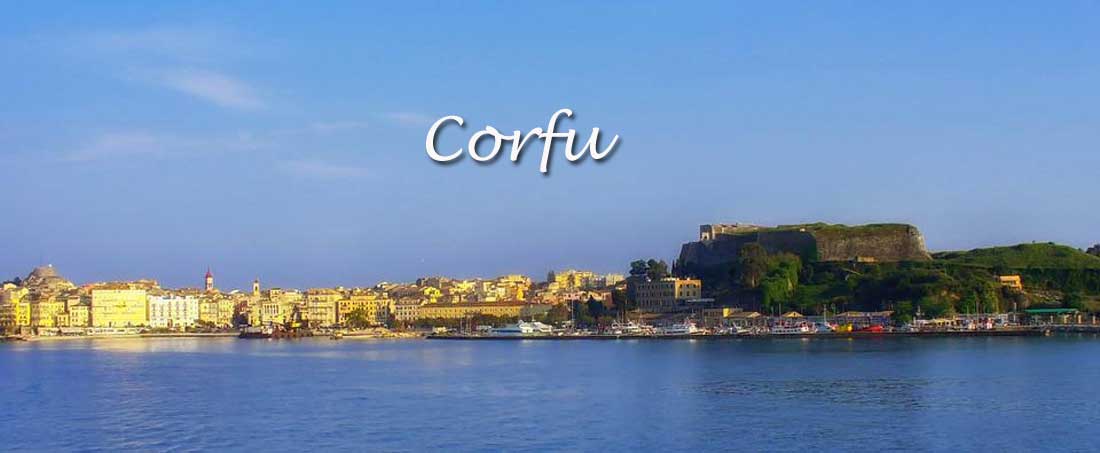Geographic information of Corfu

Most of the arable land is occupied by tree crops, mainly olives and citrus fruits. Corfu also presents the most developed animal husbandry of all the Iptane Islands, especially cattle breeding. Of particular interest is fishing, with which many residents of the beaches are engaged.
The commerce of the prefecture is concentrated mainly in the tourist areas and in the city of Corfu. The most important economic factor for the prefecture is tourism, which shows intense traffic especially in the summer months.
Mountains, rivers, lakes and morphology of the island:
1) The territory of N. Corfu is, for the most part, plain. Its distribution in categories is as follows: 63% lowland, 35% semi-mountainous and 2% mountainous.
2) Three hill ranges are formed on the territory of the island:
The first includes the peaks of Pantokratoras (904 m), Stravoskiadi (849 m) and Tsouka (619 m). The second covers the central part, forming the peaks of Agioi Deka (529 m) and Stavros (450 m). The third covers the southern part Island’s.
3) Almost the entire territory of the prefecture is a continuous plain. Fertile valleys such as those of Ropa and Lefkimmi are formed between the hill ranges.
4) There are no large rivers in the prefecture. There are only torrents and small rivers. The main ones are: Megalopotamos, Tyflopondikas, the river of Nymphs and the river of Gastouri.
Corfu has many coastal designs, with narrow beaches in some places and wide beaches in others. The most important capes are: Lefkimmi to the east, Agia Aikaterini to the north, Kefali to the west, Arilla and Aspokavos capes to the south. The most important coves of Corfu are: Lefkimmi, Liapades and Agios Georgios.
Climate: The climate of the prefecture is Mediterranean, with mild winters and cool summers. It is particularly wet and is characterized by frequent rains during autumn and winter, which usually last a long time.
Municipalities: N. Corfu consists of 12 municipalities and they are: Corfu, Agios Georgios, Achilleio, Hesperia, Thinali, Kassopaia, Korissia, Lefkimmai, Paleokastrita, Parelia, Faiako, and Paxos as well as the three communities of the islands of Erikousa, Othoni and Mathraki.
